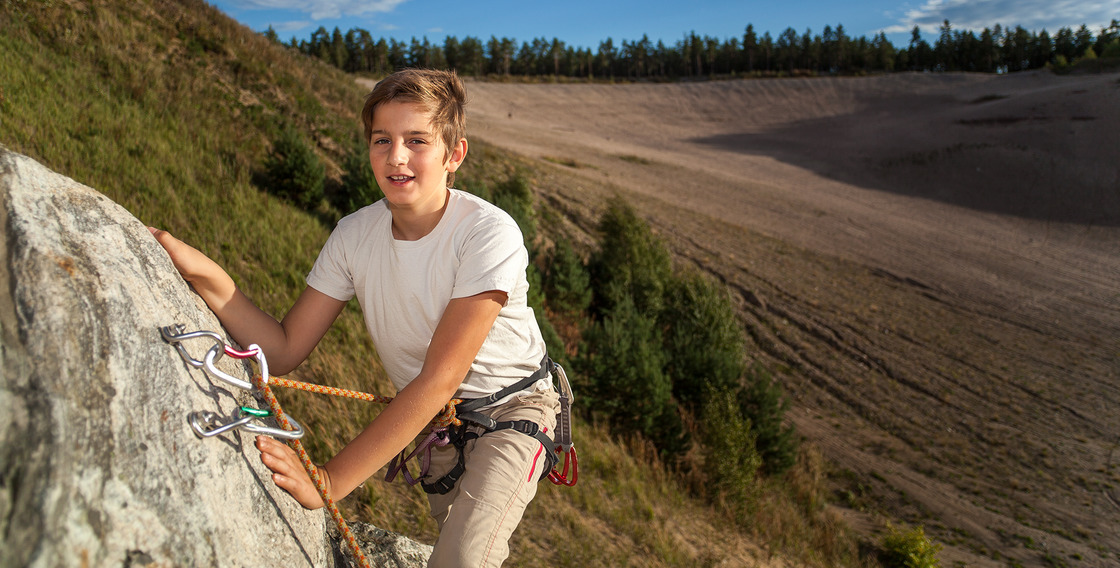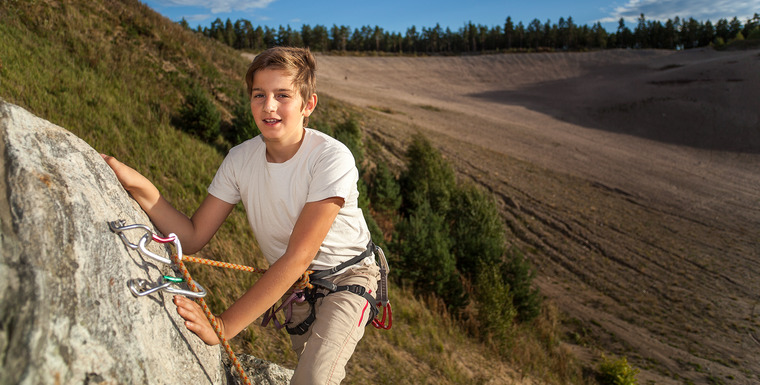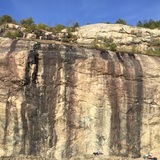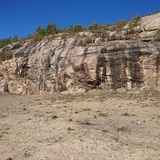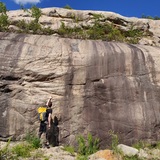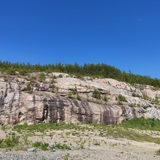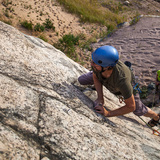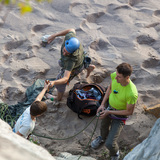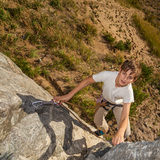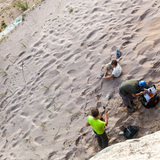Important information: Climbing is absolutely not allowed during weekdays between 7:00 and 17:00. NCC people might come and ask questions if you do so. Check for signs and do absolutely not climb if there is any activity in the gravel pit.
Very solid, rounded and water-polished rock formations with many well-bolted easier low angled sports routes that can be quite slippery. Good parking facilities and only 5 minute's walk to the crag. The entire wall is about 200 meters long and 30 meters high but is divided into smaller sectors spread over the wall and the routes are usually no longer than 8-11 meters, sometimes even shorter. All routes are well-bolted and equipped with anchors and lowering bolts on top. This is a very good climbing area for beginners.
The crag is located in a gravel pit 1.5 km south of Tullinge commuter train station and has been hidden under the sand for hundreds of thousands of years, but has literally been excavated in the last century. The rock is completely natural and is not a blast wall.
The character of the different sectors is similar - slabby and a bit slippery climbing on very high-quality rock. All sectors are accessible by foot and sector Övre väggen is reached by walking from sector Japanväggen. There are also anchors above the sectors that you can use if you prefer.
This area is a nice alternative to sector Svaväggen on Örnberget, if you like that style of climbing. Here is also a sector where you can practice multi-pitch climbing. You also avoid hordes of people, disturbing roads, etc, but you must be prepared that you might get some sand in your shoes. The crag is solid and compact, but there are a lot of loose stones above the sectors that can fall down, so a helmet is good to use.
This guide describes all the routes that exist today (2021-05-20). The “buried” ones are completely removed from this guide. What you see is what you get, and hopefully, there will be no more filling of soil around the wall.
Environment:
The walls are southwest-facing and get very hot (microclimate). Some parts dry quickly, others slower. The sun strikes the wall at around 10:30. Winter climbing is possible on calm days.
The environment is very special and seductive with its open sandy landscape sunken down and hidden away from the “real world”. The place feels very peaceful and kind of sheltered despite the open location - it's like being on another planet, very exotic! A cool place to visit even if you do not climb. It also seems like there is a completely unique fauna here, very interesting.
